Ancient Kourion: Cyprus’ House of Eustolios
Ancient Kourion, or Curium, is an archaeological site on Cyprus’s southwestern coast. Greek settlers established the city-state of Kourion from Argos in the twelfth century BCE and were an important center of trade and culture in ancient Cyprus.
The site contains many architectural highlights, including a Roman amphitheater, a House of Eustolios, and the remains of an early Christian basilica. The House of Eustolios, also known as the Villa of the Swans, is a stunning example of Roman architecture and features intricate mosaics depicting scenes from Greek mythology. The early Christian basilica contains a baptistery, an atrium, and various rooms that provide insight into the early Christian church’s practices and beliefs.
The House of Eustolios:
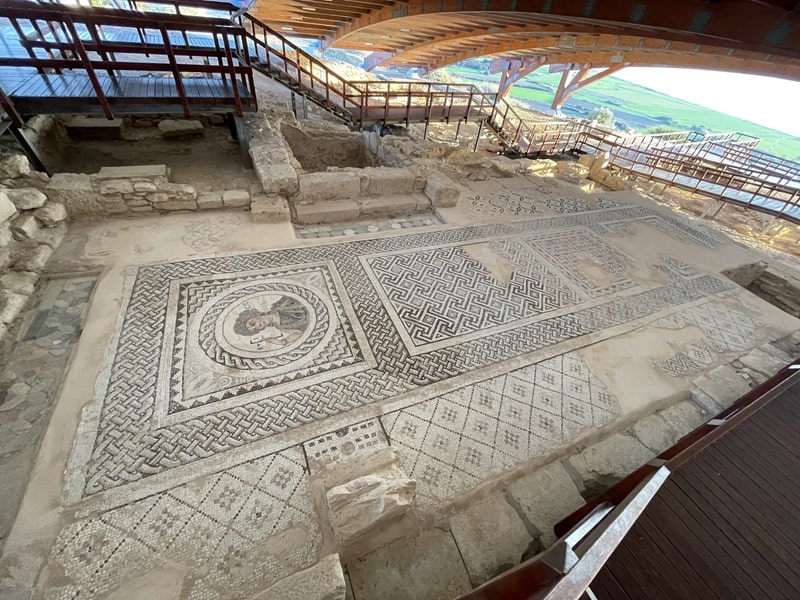
This post may contain affiliate links. Please read our disclosure and privacy policy for more information.
Today, Ancient Kourion is a popular tourist destination and a significant cultural landmark in Cyprus. If you are visiting Cyprus, visiting Ancient Kourion (Curium) is a must!
Historical Background
The earliest known occupation of the area dates back to the Ceramic Neolithic period, around 5500-4000 BCE, at the hilltop settlement of Sotira-Teppes, located 9 km northwest of Kourion. Historians believe the Argives founded the city in the 13th century BCE.
Over the centuries, Kourion played an essential role in many regional conflicts. It was conquered by the Persians in 525 BCE and then by Alexander the Great in 333 BCE. During the Hellenistic period, Kourion was a prosperous city with a thriving economy and culture. The city’s main deity was Apollo Hylates, and the Sanctuary of Apollo Hylates was one of Cyprus’s most important religious sites.

The Roman period saw Kourion grow into an important cultural and political center. The city was known for its fine mosaics, which can still be seen today. In 365 CE, a devastating earthquake destroyed much of the town, including the theater, the public baths, and the forum. The city was rebuilt, but it never regained its former glory.
In the early Christian period, Kourion became an important center of Christianity. The Meydani Basilica was built on the site of an ancient temple to Demeter, and many other churches were built throughout the city. Kourion was abandoned in the 7th century CE and remained uninhabited until the 19th century. Today, Kourion is a popular tourist destination, and its ruins provide a fascinating glimpse into the city’s rich history.
Location Of Ancient Kourion
The city-state was situated on a limestone promontory almost 100 meters high along the shore of Episkopi Bay. The location of the city-state was strategically important as it provided easy access to the sea and allowed for trade with other Mediterranean cities.
The city-state was built on a hill, which provided natural defenses against invaders. The mountain was also ideal for constructing the city’s most important buildings, such as the Acropolis, the Agora, and the theater. The acropolis was the highest point of the city-state and was used as a fortress to protect the city from invaders.
Kourion is located approximately 18 km west of Limassol, one of Cyprus’s most important cities during ancient times. The city-state was also near the ancient city of Amathus, another important town in Cyprus during ancient times. The proximity to these cities allowed trade and cultural exchange between the city-states.
Architectural Highlights
Kourion is home to several remarkable architectural wonders that showcase the city-state’s rich history and culture. Here are some of the highlights:
Theatre
One of the most impressive structures in Kourion is the ancient theatre, which is believed to have been built during the 2nd century BC. The theatre is on a hillside with a stunning view of the Mediterranean Sea. It was designed to seat around 3,500 people and was used for various events, including theatrical performances, religious ceremonies, and political gatherings. The theatre was renovated during the Roman period and was used until the 4th century AD.
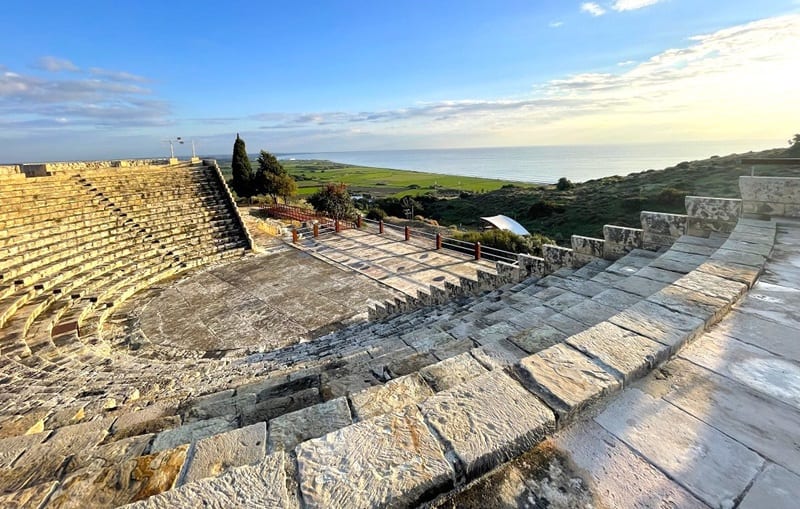
House of Achilles
The House of Achilles is a well-preserved Roman villa built in the 2nd century AD. The villa is named after a mosaic that depicts the Greek hero Achilles. The mosaic is located in the villa’s central courtyard and is one of the most impressive mosaics in Kourion. The villa also features several other beautiful mosaics and frescoes depicting scenes from Greek mythology.

House of Eustolios
There are many archaeological monuments in Limassol, but the House of Eustolios is one of the most important. This ancient building is located in the area of Episkopi, within an ancient Curium, illustrating the city’s past and life during antiquity. Limassol was formed by the ancient city of Curium and the ancient city of Amathus, which together comprised one of the most glorious cities-kingdoms of antiquity.
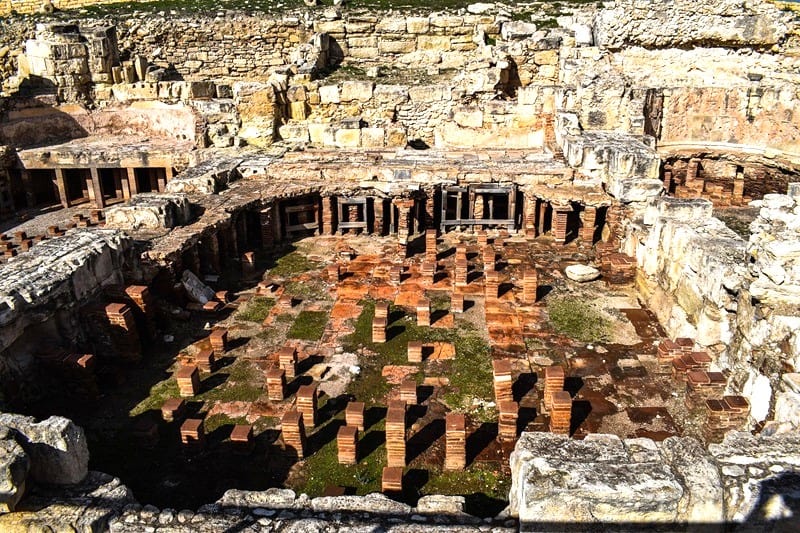
In a prominent position on the southeastern edge of the hill, the House is located at the archaeological site of Curium. The building is an imposing structure with impressive mosaics. It is unknown who owned the House, Eustolios, but he made an offer to the citizens of the Curium. Eustolios, according to inscriptions in the area, wanted to aid the city’s recovery after the earthquake of 365 AD. As a result, he decided to build a big house for the people of Curium and give it to them.
House of the Gladiators
The House of the Gladiators is another Roman villa in the eastern part of Kourion. The villa is named after a mosaic that depicts two gladiators fighting. The villa was built during the 2nd century AD and was used as a residence for wealthy Romans. The villa features several well-preserved mosaics and frescoes depicting various Roman life scenes, including gladiatorial games and hunting scenes.
Cultural Significance
Kourion was an essential city-state on the southwestern coast of Cyprus. It was founded by Greek settlers from Argos in the twelfth century BCE, after the collapse of the Mycenaean palaces. The city flourished and became an important cultural and political center in the Roman era.
Kourion was also an important center for early Christianity. The city had a Christian bishopric, and several early Christian churches have been found there. One of the most significant is the Basilica of the Bishopric, which was built in the fifth century AD and was one of the largest churches in Cyprus at the time.
Cyprus Highlights
Excavation and Discoveries
First Excavation
The first archaeological excavation at Kourion was conducted by George McFadden and John Franklin Daniel in 1934. They uncovered several vital structures, including a theater, a public bath, and a market. The team also found evidence of a catastrophic earthquake that destroyed much of the city in the 4th century AD.
Recent Findings
In recent years, excavations at Kourion have uncovered even more fascinating discoveries. In 2013, a team of archaeologists discovered a large Roman villa with stunning mosaics depicting scenes from Greek mythology. The villa is thought to have belonged to a wealthy merchant or politician.
In 2016, another team of archaeologists uncovered a well-preserved mosaic floor in a 5th-century AD Christian basilica. The mosaic depicts a series of geometric patterns and symbols and several biblical scenes, including the miracle of the loaves and fishes.
These recent discoveries have shed new light on the history of Kourion and the people who lived there. They have also helped to preserve and protect the city’s cultural heritage for future generations.

Preservation and Conservation Efforts
Efforts to preserve the ancient city of Kourion have been ongoing for many years. The site is a UNESCO World Heritage site protected by international law. The Cyprus Department of Antiquities is responsible for the site’s management, conservation, and protection.
One of the most significant preservation efforts at Kourion was excavating and restoring the Roman amphitheater. The theater was excavated in the 1950s, and restoration began in the 1960s. Today, visitors to Kourion can see the restored theater, still used for performances and concerts.

Another necessary preservation effort at Kourion is the ongoing conservation work on the mosaics in the House of Eustolios. The mosaics in this house are some of the finest examples of Roman mosaics in the Mediterranean, and they require careful conservation to ensure their long-term survival.
In addition to these specific preservation efforts, the Department of Antiquities protects the site from erosion, weathering, and threats to human activity. Visitors to Kourion are asked to respect the site and its surroundings and to follow the guidelines set out by the Department of Antiquities. These guidelines include not climbing on the ruins, not littering, and not removing any artifacts or stones from the site.
Visiting Ancient Kourion
Ancient Kourion is a must-see destination for history enthusiasts and tourists visiting Cyprus.
You can visit Ancient Kourion daily from 8:00 am to 5:00 pm. The entrance fee is €4.50 for adults and €2.25 for children under 12. Visitors can explore the site independently or hire a guide to learn more about the history and significance of the ruins.
FAQs
What is the significance of the ancient city of Kourion in Cyprus?

Kourion was an important ancient Greek city-state on the southwestern coast of Cyprus. It was first inhabited during Neolithic times, with the earliest evidence dating back to 4,500-3,900 BC. The city-state flourished during the Hellenistic and Roman periods, and its ruins provide valuable insight into the political, economic, and social life of ancient Cyprus.
What are some interesting historical facts about Kourion?

Kourion was known for its impressive public buildings, including a large theater that could seat up to 3,500 spectators, a public bath complex, and a market. The city-state was also an essential center for producing pottery and glassware. During the Roman period, Kourion became an important Christian center, and several churches were built there.
Can you provide directions to Kourion?
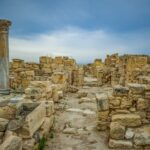
Kourion is located in Limassol, Cyprus. The archaeological site is on a hill overlooking the Mediterranean Sea, about 19km west of Limassol. Visitors can reach the site by car or bus, and ample parking is available.
Who were the ancient inhabitants of Kourion?
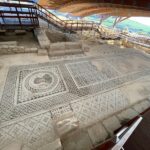
Greek settlers initially settled Kourion from Argos. Various powers later ruled the city-state, including the Persians, the Ptolemies, and the Romans. During the Byzantine period, the city was an important Christian center.
What can be found at the archaeological site of Kourion?
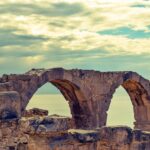
The archaeological site of Kourion contains a wealth of ancient ruins, including the remains of public buildings, houses, and temples. Visitors can explore the city’s impressive theater, public baths, market, and several churches and tombs dating back to the Roman and Byzantine periods.
How does Kourion contribute to our understanding of ancient Cyprus?

Kourion provides valuable insight into the political, economic, and social life of ancient Cyprus. The city-state was an essential center for trade and commerce, and its ruins offer a glimpse into the daily lives of its inhabitants. Additionally, the city’s Christian heritage sheds light on the spread of Christianity in the eastern Mediterranean.
Closing Thoughts
If you are in Cyprus and are interested in seeing a Roman amphitheater, Ancient Kourion is a must! While it’s a busy tourist destination, preservation efforts allow visitors to experience the city-state’s rich history and cultural significance.
Looking for more on Cyprus? Start Here:
- 20 Plus Things to Do in Cyprus
- Adonis Baths Waterfall in Cyprus
- Ancient Salamis – The City Of Ruins In Famagusta
- Can You Fly to North Cyprus?
- Cyprus Border Crossing Between North and South Cyprus
- Kolossi Castle in Cyprus – A Hidden Gem
- North Cyprus – The Must-See Attractions!
We participate in the Amazon Services LLC Associates Program, an affiliate advertising program designed to provide a means for us to earn fees by linking to Amazon.com and affiliated sites.
Brit On The Move™ Travel Resources
Ready to book your next trip? Use these resources that work:
Was the flight canceled or delayed? Find out if you are eligible for compensation with AirHelp.
- Book your Hotel: Find the best prices; use Booking.com
- Find Apartment Rentals: You will find the best prices on apartment rentals with Booking.com’s Apartment Finder.
- Travel Insurance: Don’t leave home without it. View our suggestions to help you decide which travel insurance is for you: Travel Insurance Guide.
- Want to earn tons of points and make your next trip accessible? Check out our recommendations for Travel Credit Cards.
- Want To Take A Volunteer Vacation or a Working Holiday? Check out the complete guide to how here!
- Want to Shop For Travel Accessories? Check out our Travel Shop.
Need more help planning your trip? Visit our Resources Page, which highlights the great companies we use for traveling.